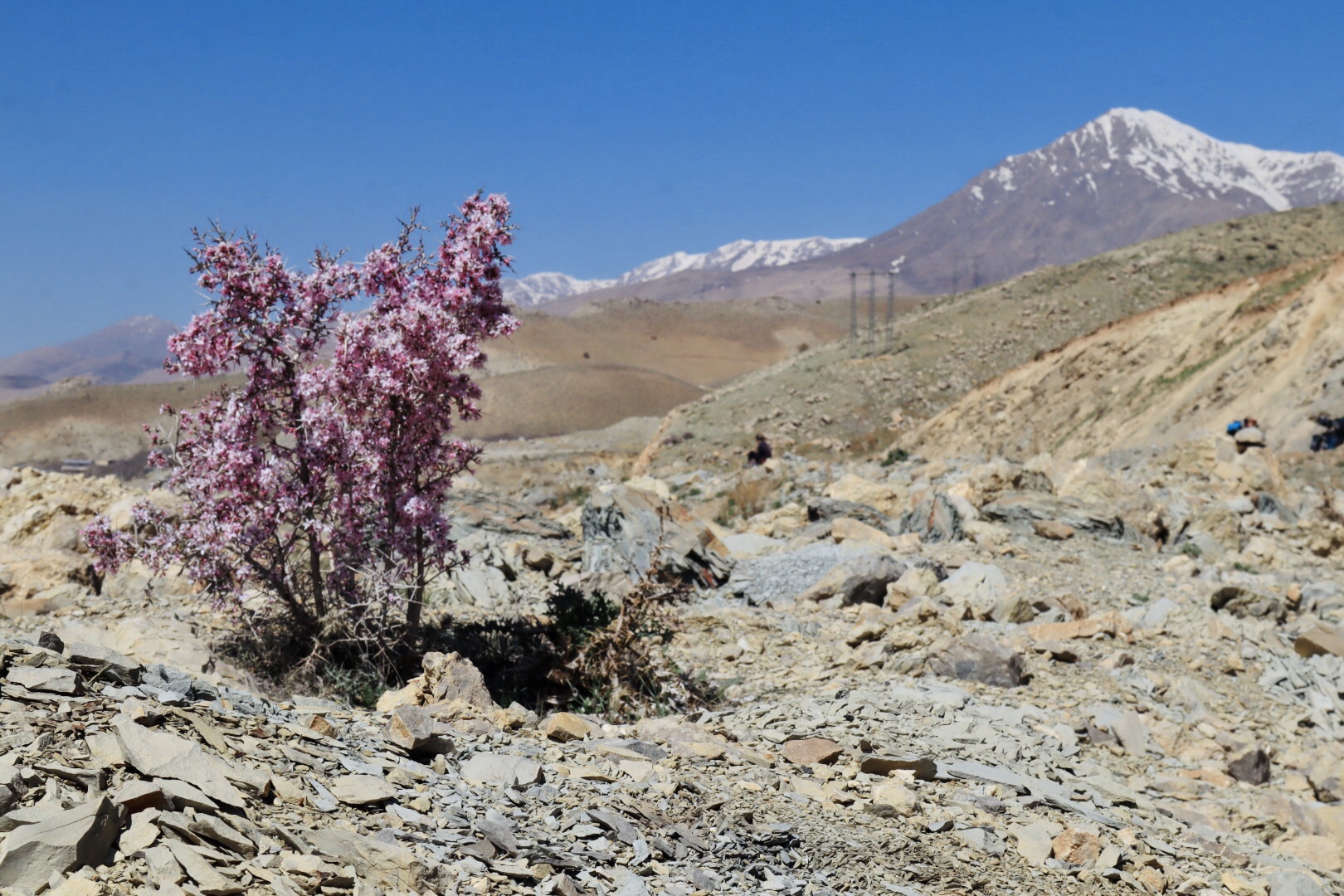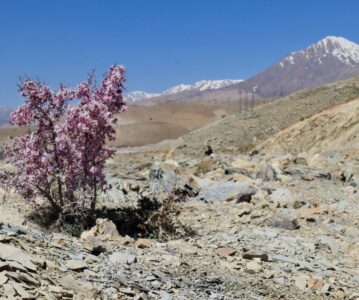The fields are getting greener, the almond, apple and apricot trees are blooming and our spirits are rejoicing like two little children. We can finally pack the gloves and winter layers deeper and the dressing and changing becomes less complicated every day. Today we will reach Lorestan. This mountainous province is located in the northwest of the country and thanks to its geography is very rich in water. This part of the country is inhabited, among others, by the Loren people, who speak the language of the same name. The area is also home to nomads who live off their large herds of sheep and goats.
We cross another high valley, get invited for tea and donkey ride by a frenetically waving man, survive a small accident with one of the dangerous teenage motorcycle drivers (powerful 125’s with 10 to 15 year olds at the wheel…) and cycle towards evening to the foot of the next mountain range. The gate to Lorestan. “Don`t go there, mountain people no good”, a driver warns us and recommends to take the main road. Of course we don`t do that, but we look for a nice place to spend the night in a fruit plantation at the foot of the mountains. The next day’s drive up into the valley pleases us immensely and the “No good people” wave cheerfully to us from their cars, give us fresh bread and a refreshing yogurt drink at the first stop, take selfies and ask us interested questions.
This stretch of road is a true reward program. With each day of riding, it gets much warmer and our usual ratio of kilometers to meters of altitude is significantly undercut. Over the course of the next week, we will whiz down from the Iran-usual 2000 meters of altitude to just under 200. Soon we reach the lively Khorram Abad and here we can finally change to our summer tenue. In Iran this means: thin, long pants and a T-shirt in my case with a thin shirt over it. Louie continues to ride in a T-shirt and a few days later I also put on the shirt only in towns and villages. While driving the bicycle helmet replaces the headscarf and so it can be lived actually quite well.
In Khorram Abad there is something going on! The city is wonderfully green and people are out and about, because it is Nowruz vacation time. During two weeks, Iranians travel in their family clans all over the country visiting their relatives. Picnics are held every day, and you can find a family under practically every tree. Picnicking in Iran is a big thing: the big sofra cloth is unrolled and on the gas stove that is brought along, the pre-cooked food is warmed up, simple dishes are freshly prepared, tea is boiled or the coal for the hukka (water pipe) is heated. Not infrequently, a small fire is lit on which meat skewers are roasted. We eat, crack jokes and afterwards we like to take a rest on the cushions we brought with us.
For our lunch break we choose a quiet park on the outskirts of the city, where we have to look for a place in the shade for the first time in a long time. Our lunch picnic is always fresh and healthy: Here in Iran it consists of naan (flat bread), yogurt, cucumbers, tomatoes and is optionally supplemented with cream cheese, cream (yes, really), nuts and fresh herbs.
The family next door soon completes our buffet with oranges, apples and a nut mixture and later a couple joins us, which spoils us with chai and cookies and a funny conversation.
Later in the evening, Hesam’s wife, two children and his sister arrive. The younger sister speaks good English, as she aspires to emigrate to Kannada. To pursue this big dream, she works extra shifts and crams the language. Soon, things get busy: rice is put on, vegetables are chopped, and meat for the shish (kebabs) is marinated with saffron and onion water. Outside on the terrace a small kebab grill is fired up, there is lively chatting and joking and our mouths have been watering for a long time. We dine like kings on this sociable evening and feel wonderfully well.
The further drive towards Pol-e Dhoktar takes us along the river Kashkan through a spectacular landscape. The river has created a deep canyon and the blue-gray mass of water roars in tight curves past steep rock faces, fields and fruit trees. Bushes bloom in bright pink and to our great joy we can enjoy this panorama mostly during leisurely descents.
In Pol-e Dhoktar we admire the remains of the mighty bridge of the same name, which was once built during the reign of the Sassanids around 250-650 AD.
The small town looks like a Wild West city. A wide road with the main stores on both sides leads through the town, boys sit on big motorcycles, men wear the typical pludder pants of the rural population, the few women are wearing the black chaddor and shyly wave to me. We fill up our supplies of food and water and cycle out of the village, hoping to make a few more kilometers.


